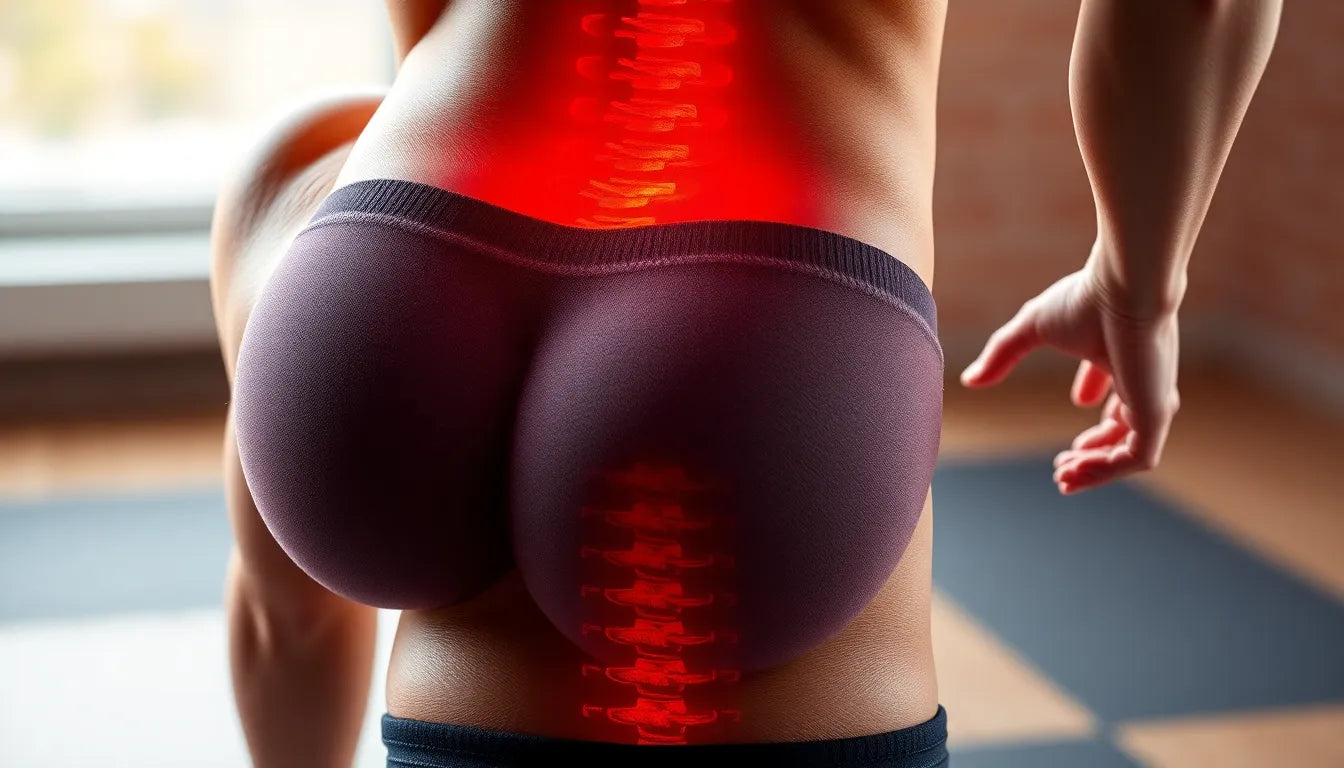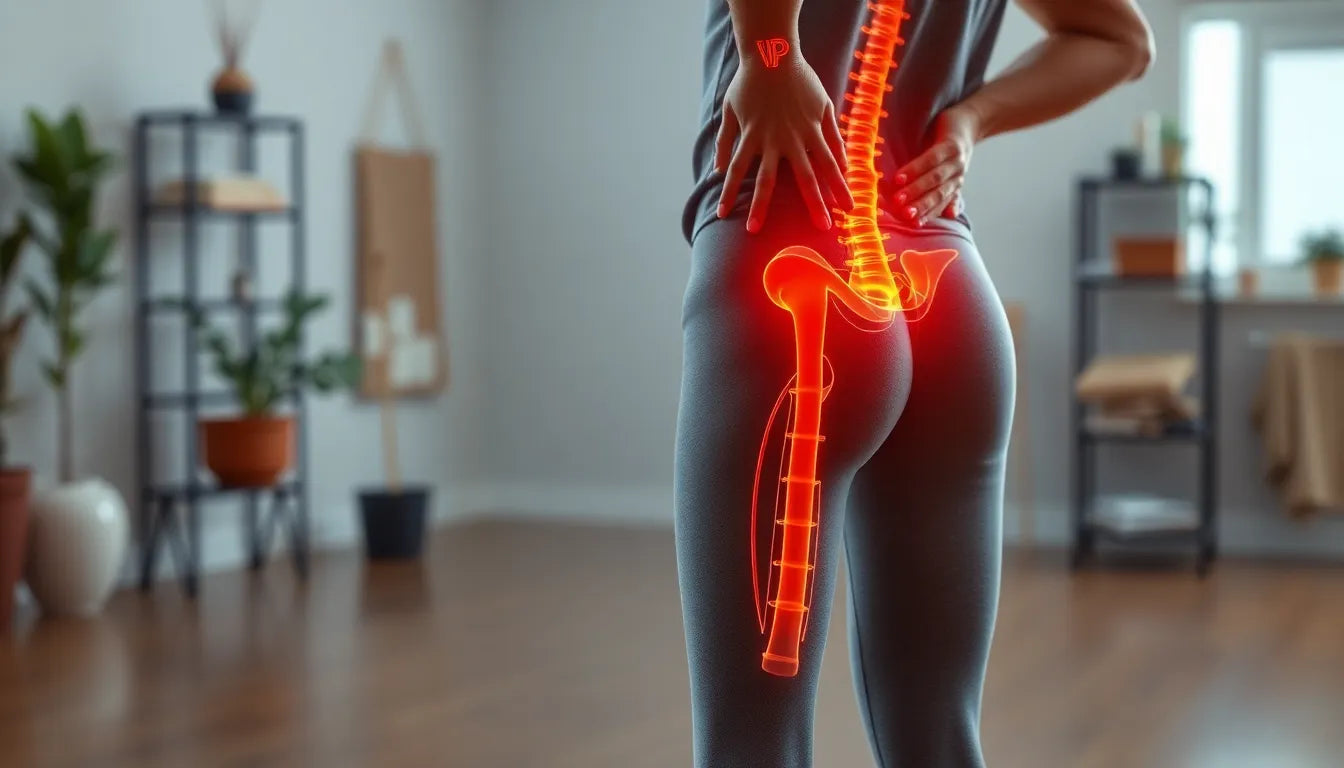Dealing with a herniated disc can be a daunting experience, impacting your quality of life and daily activities. Understanding the nature of this condition is the first step toward finding effective treatment and relief. A herniated disc, sometimes referred to as a slipped or ruptured disc, occurs when the soft inner gel of a spinal disc pushes through a tear in its tougher exterior. This can lead to irritation or compression of nearby nerves, causing pain, numbness, or weakness in the limbs.
Common causes and demographics
Herniated discs are often the result of gradual, age-related wear and tear known as disc degeneration. As we age, our spinal discs lose some of their water content, making them less flexible and more prone to tearing or rupturing with even minor strains or twists. Other common causes include improper lifting techniques, sudden traumatic injuries, and repetitive stress on the spine. While anyone can develop a herniated disc, it is most prevalent among individuals between the ages of 30 and 50. Men are slightly more likely to suffer from this condition than women, and those with physically demanding jobs or lifestyles are at increased risk.
Initial symptoms and daily impact
The symptoms of a herniated disc can vary significantly depending on the location of the disc and the extent of the herniation. Common symptoms include sharp or burning pain in the back or neck, radiating pain into the arms or legs, and tingling or numbness in the extremities. These symptoms can severely impact daily life, making it challenging to perform routine tasks, maintain employment, or enjoy recreational activities. The discomfort and mobility issues associated with a herniated disc can also lead to secondary issues such as sleep disturbances and emotional stress.
The importance of early intervention
Recognizing the signs of a herniated disc and seeking early intervention is crucial for effective management and recovery. Timely diagnosis and treatment can prevent the condition from worsening and reduce the risk of long-term complications. If left untreated, a herniated disc can lead to chronic pain, permanent nerve damage, and significant mobility issues. Early intervention not only alleviates symptoms but also improves the likelihood of a full recovery without the need for invasive procedures.
In the upcoming sections, we will explore various treatment options, ranging from conservative non-surgical methods to more advanced surgical interventions, to help guide you on your path to healing and regaining a pain-free life.
Non-surgical treatments: the first line of defense
When addressing a herniated disc, non-surgical treatments are often the initial approach to manage pain and improve function. These methods focus on relieving symptoms and promoting healing without the need for invasive procedures.
Physical therapy
Physical therapy plays a crucial role in the recovery from a herniated disc. Through a series of guided exercises, physical therapy aims to reduce pain, enhance mobility, and strengthen the muscles supporting the spine. Common exercises include stretching routines, core strengthening, and low-impact aerobic activities. These exercises help to alleviate pressure on the affected nerves and improve overall spinal health, contributing to a more rapid recovery.

Lumbar support belt
Adjustable lumbar belt for relief and stabilization of lower back pain and herniated discs.
Medications
Medications are often used to manage the pain and inflammation associated with a herniated disc. Over-the-counter options such as nonsteroidal anti-inflammatory drugs (NSAIDs) like ibuprofen and naproxen are commonly recommended. For more severe cases, prescription medications may be necessary. These can include gabapentin for nerve pain, muscle relaxants to ease muscle spasms, low-dose antidepressants for chronic pain management, and opioids for short-term relief of intense pain.
Heat and cold therapy
Heat and cold therapy offers a simple yet effective method for managing pain at home. Cold therapy, such as ice packs, can help reduce inflammation and numb acute pain, while heat therapy, using warm compresses or heating pads, can relax tense muscles and improve blood flow to the affected area. Alternating between these therapies can provide significant relief. It is recommended to apply cold therapy for 15-20 minutes several times a day during the acute phase, and switch to heat therapy once the initial inflammation has subsided.
Alternative therapies
Alternative therapies like acupuncture and chiropractic care can complement traditional treatments for a herniated disc. Acupuncture involves the insertion of thin needles into specific points on the body to relieve pain and promote healing. Chiropractic care focuses on spinal adjustments to improve alignment and reduce nerve compression. While evidence on the effectiveness of these therapies varies, many patients report significant improvements in pain and function.
Lifestyle adjustments
Making certain lifestyle adjustments can greatly support recovery and prevent future disc issues. Regular exercise, maintaining a healthy weight, and adopting ergonomic adaptations for daily activities are essential. Incorporating exercises that promote flexibility and core strength can help stabilize the spine and reduce the risk of future herniations. Additionally, ensuring that workspaces and home environments are ergonomically friendly can prevent strain on the spine, facilitating a smoother recovery process.

Men's Posture Shirt™ - Black
Patented Posture Shirt™ for men that helps relieve pain and improve posture during activity or rest.
Targeted interventional procedures
For cases where conservative treatments are insufficient, targeted interventional procedures may be considered. These procedures offer direct relief to affected nerves and can be a valuable step before considering surgical options.
Epidural steroid injections
Epidural steroid injections involve the administration of corticosteroids directly into the epidural space of the spine. This procedure aims to reduce inflammation and alleviate nerve compression, providing significant pain relief. The procedure is typically quick, with minimal recovery time, and can offer relief for several weeks to months, allowing patients to engage more effectively in physical therapy and other rehabilitation efforts.
Selective nerve root blocks
Selective nerve root blocks are similar to epidural injections but target specific nerve roots. This precision allows for more targeted pain relief, which can be particularly beneficial for diagnosing the exact source of pain. Success rates for these procedures are generally high, with many patients experiencing substantial pain reduction and improved function.
In conclusion, non-surgical and interventional treatments provide a comprehensive approach to managing herniated discs, offering effective pain relief and functional improvement. By understanding and utilizing these options, patients can embark on a path to recovery with confidence.
Surgical options: when conservative treatments aren't enough
When non-surgical treatments fail to provide sufficient relief from a herniated disc, surgical intervention may be considered. Surgical options aim to alleviate pain and restore function by addressing the underlying structural issues in the spine.
Microdiscectomy
Microdiscectomy is a minimally invasive surgical procedure that involves removing a portion of the herniated disc to relieve pressure on the affected nerve. This procedure is often recommended for patients experiencing significant nerve compression and has a high success rate in reducing pain. Recovery from a microdiscectomy is typically faster than traditional open surgery, with many patients returning to normal activities within a few weeks.
Lumbar laminectomy and minimally invasive surgeries
Lumbar laminectomy involves removing a portion of the vertebral bone, or lamina, to create more space for the spinal cord and nerves. This procedure can be performed using traditional open surgery or minimally invasive techniques, which involve smaller incisions and potentially quicker recovery times. Minimally invasive surgeries offer the benefits of reduced postoperative pain, less scarring, and shorter hospital stays.
Artificial disc replacement and spinal fusion
Artificial disc replacement is a modern surgical option that involves replacing the damaged disc with an artificial one, preserving the mobility of the spinal segment. This procedure is suitable for certain candidates and offers the advantage of maintaining natural spine movement. In contrast, spinal fusion involves joining two or more vertebrae to stabilize the spine, which can reduce pain but limits flexibility. Both procedures have long-term implications and should be carefully considered with a healthcare provider.
Integrating Anodyne products
Ergonomic aids from Anodyne can play a vital role in supporting recovery from a herniated disc and preventing recurrence. Products such as ergonomic chairs, supportive cushions, and adjustable desks help maintain proper posture and reduce strain on the spine. Real-life examples demonstrate the effectiveness of these aids in rehabilitation, highlighting their importance in a comprehensive treatment plan.
Frequently asked questions
What are the first signs of a herniated disc?
Common symptoms of a herniated disc include sharp or burning pain in the back or neck, pain radiating into the arms or legs, and tingling or numbness in the extremities. If you experience these symptoms, it is important to seek medical advice promptly for an accurate diagnosis and appropriate treatment.
How long does it take to recover from a herniated disc?
Recovery time from a herniated disc varies depending on the severity of the condition and the treatment approach. Non-surgical treatments may take several weeks to months for significant improvement, while surgical options like microdiscectomy often result in quicker recovery, typically within a few weeks.
Is surgery always necessary for a herniated disc?
Surgery is not always necessary for a herniated disc. Many cases can be effectively managed with non-surgical treatments such as physical therapy, medications, and lifestyle adjustments. Surgery is usually considered when conservative treatments fail to alleviate symptoms or when there is significant nerve compression causing severe pain or neurological deficits.
Can lifestyle changes prevent herniated discs?
Yes, lifestyle changes can help prevent herniated discs. Maintaining a healthy weight, engaging in regular exercise that strengthens the core and supports spinal health, and adopting ergonomic practices in daily activities can reduce the risk of disc herniation.
What should I expect during physical therapy?
During physical therapy for a herniated disc, you can expect a personalized exercise program designed to reduce pain, improve mobility, and strengthen supporting muscles. Sessions often include stretching, core strengthening, and low-impact aerobic exercises, with guidance from a therapist to ensure proper technique and progression.
Kilder
- Author(s). (Year). "Title of the Article." Journal Name.
- Author(s). (Year). "Title of the Article." Journal Name.
- Author(s). (Year). "Prevalence, Clinical Predictors, and Mechanisms of Resorption in Lumbar Disc Herniation: A Systematic Review." Orthopedic Reviews.
- "Herniated Disc." Stanford Health Care.
- "Herniated Disk: Diagnosis & Treatment." Mayo Clinic.
- "Clinical Trials - Herniated Disk." Mayo Clinic.
- Author(s). (Year). "Title of the Article." Neurospine.
- "Herniated Disc." Yale Medicine.


















